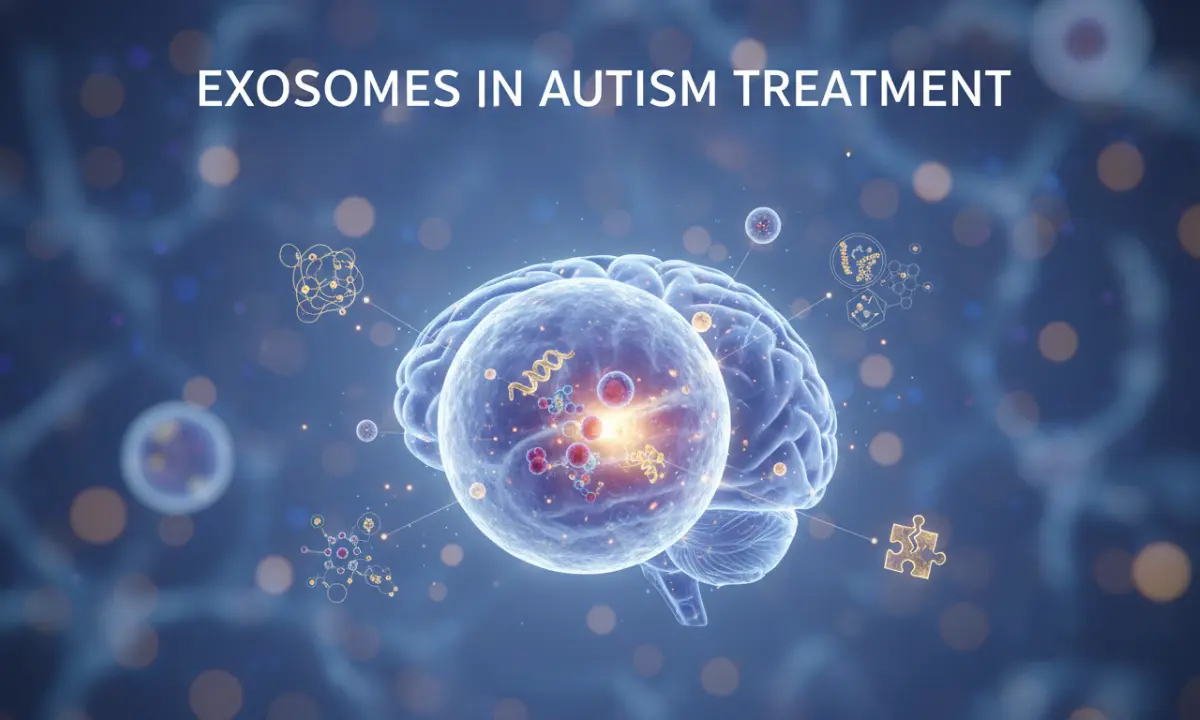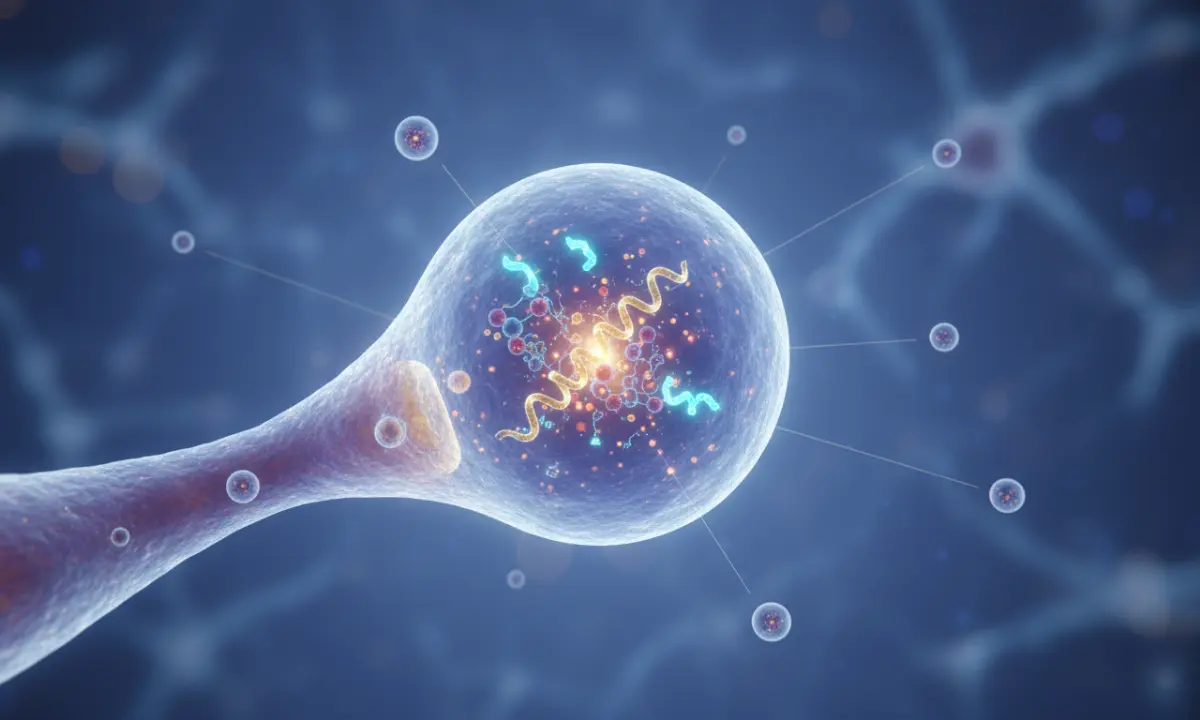
The Role of Exosomes in Autism Treatment: Beyond Stem Cells
For years, the conversation around regenerative medicine and Autism Spectrum Disorder (ASD) has centered on mesenchymal stem cells (MSCs). But what if the stem cells themselves are only part of the story?
Dr. Salman Gilani and the IRM team continue to pioneer advanced regenerative treatments that integrate stem cells and exosomes.
Table of Contents
What if the most powerful component of this therapy isn’t the cell, but the message it sends?
Enter exosomes, the microscopic messengers that are revolutionizing our understanding of cellular therapy. At the Institute for Regenerative Medicine (IRM), we’ve long understood that a successful protocol involves more than stem cells. It’s about the powerful synergy between MSCs and the massive dose of exosomes that accompany them.
For years, the conversation around regenerative medicine and Autism Spectrum Disorder (ASD) has centered on mesenchymal stem cells (MSCs) But what if the stem cells themselves are only part of the story?
What Exactly Are Exosomes?
If you think of a stem cell as a miniature factory, exosomes are the packages it ships out.
They are not cells. They are tiny, nanosized vesicles (like little bubbles) released from cells, especially stem cells. These packages are loaded with precious cargo: proteins, lipids, and, most importantly, genetic information such as mRNA and microRNA.
This intercellular communication is a crucial mechanism in immunomodulation, helping regulate immune balance in autism and other conditions.
Their entire purpose is communication. They travel from a “donor” cell to a “recipient” cell, fuse with the recipient cell, and deliver their cargo. In short, they are the primary way stem cells exert their healing influence, telling neighboring cells to calm down, repair, or protect themselves.
This is the very essence of the “paracrine effect” we often talk about in regenerative medicine.

The Synergistic Effect: Why 75-100 Billion Exosomes?
When a patient receives stem cell therapy at IRM, they aren’t just getting MSCs. The protocol includes an infusion of 75 to 100 billion exosomes derived from the same pristine, umbilical cord-based source. This isn’t just an “add-on”; it’s a core part of the therapeutic strategy. Here’s why:
Immediate-Release: The Exosomes
This is the “immediate-release” dose. We are front-loading the therapy with a massive, concentrated flood of the very healing signals the stem cells are there to produce. These exosomes get to work instantly, delivering anti-inflammatory and neuro-supportive messages throughout the body and, critically, across the blood-brain barrier.
Sustained-Release: The MSCs (Stem Cells)
The stem cells are the living “factories” that travel to sites of inflammation, set up shop, and continue producing their own healing exosomes and growth factors. Learn more about the benefits of stem cell therapy in Pakistan.
Creating a Receptive Environment
The initial high-dose exosome infusion immediately begins to quiet the body’s overactive inflammatory and immune responses. This creates a much healthier, more receptive environment for the new MSCs to perform their job effectively.
Supporting this environment through proper nutrition and cellular health is also essential, see our guide on foods that generate stem cells.
It’s like sending in peacekeepers (exosomes) to calm a situation before the builders (MSCs) arrive.
This one-two punch, an immediate, powerful signaling burst followed by a long-term, sustained cellular presence, is what creates the powerful synergistic effect that defines modern regenerative medicine ASD protocols.
Key Benefits of Exosomes for Autism
TThese benefits become even more significant when integrated into a complete autism stem cell treatment plan that combines exosomes, MSCs, and allied therapies. Because they are the primary “action agents” of stem cells, their benefits are similar but more direct.
Potent Anti-Inflammation
Exosomes carry messages specifically designed to tell hyperactive immune cells (like microglia in the brain) to “calm down,” thereby reducing chronic neuroinflammation linked to many ASD symptoms.
Superior Delivery
Being thousands of times smaller than a cell, exosomes can travel more easily throughout the body. Most importantly, they are believed to be uniquely capable of crossing the highly selective blood-brain barrier, delivering their healing cargo directly to the central nervous system where it’s needed most. A similar approach is followed in IV stem cell therapy, where targeted delivery enhances neurological repair and cellular regeneration.
Targeted Immune Modulation
They carry the microRNA and proteins that help “re-balance” a dysregulated immune system, a common underlying issue in ASD. This process is similar to how stem cell therapy helps improve autism symptoms, by restoring neural and immune communication.
Safety & Purity
Exosomes cannot replicate or transform into other cell types, which simplifies their safety profile. They are pure, concentrated messengers of healing.
Beyond the Cell: The Future of ASD Therapy
As we learn more about exosomes and autism treatment, it’s clear that the future of regenerative medicine lies in this comprehensive, synergistic approach.
It’s no longer just about the “cell” but about the “signal.”
By combining the long-term potential of the body’s own master repair cells (MSCs) with an immediate, high-dose infusion of their powerful healing messages (exosomes), we can offer a more robust, effective, and sophisticated protocol. It’s this combination that provides a new horizon of hope for improving the core symptoms of autism and enhancing the quality of life for individuals and their families.
To understand how these approaches are shaping healthcare locally, explore the future of stem cell therapy in Pakistan.










